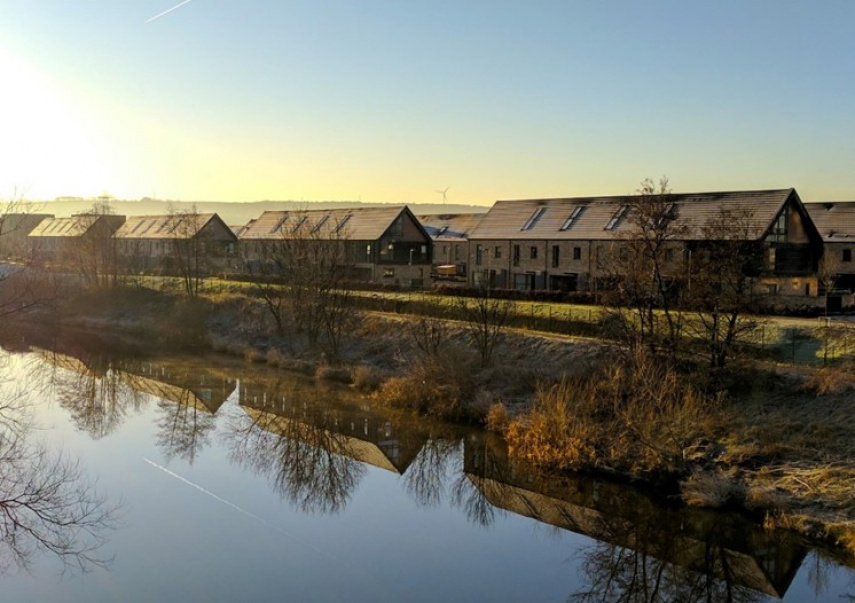Glasgow Commonwealth Games Village
The Commonwealth Games Village was a joint promotion between Glasgow City Council and the Scottish Government for the purposes of constructing an athletes’ village for the 20th Commonwealth Games, which took place in Glasgow in 2014. It demonstrates how a public interest led development approach and wider regenerational activities can shape a new market and place where none existed before. This case also demonstrates the importance of an active land policy and masterplanned approach.
Approach
The Commonwealth Games Village is a 38 hectare (94 acre) urban brownfield regeneration site, located in Dalmarnock in the East End of Glasgow. The River Clyde forms a natural boundary which loops around its southern and eastern edges. The East End Regeneration Route (EERR) runs along the north-western edge connecting the Village to the road infrastructure in and around Glasgow. The site is also bounded to the east and north by existing low-rise housing. The development of the Games Village was a joint promotion between the Scottish Government and Glasgow City Council working together at various stages with Clyde Gateway, South Lanarkshire Council, and others. The project is an example of a public interest led development which had the primary goal of delivering the 20th Commonwealth Games.
The Scottish Government and Glasgow City Council provided £425m towards the overall cost of the Commonwealth Games, including the development of the athletes’ accommodation. The Council led on a programme of major capital projects for the sporting venues and the Village. Both the Government and the Council also had long-term legacy plans which included leveraging the Games to meet the city’s housing strategy.
Benefits and lessons learned
Following the Games, the athletes’ accommodation was adapted and expanded to form 700 new homes – 300 for sale and 400 for social and affordable rent – the majority of which are family homes arranged in terraces with some flatted accommodation alongside the River Clyde. The first residents moved in at the beginning of 2015, just a few months after the Games concluded. The 400 homes for social and affordable rent have all been transferred to, and are now managed by, three housing associations – Glasgow Housing Association (98 homes), West of Scotland Housing Association (102 homes) and Thenue Housing Association (200 homes). According to one interviewee, who was a key partner in the City Legacy consortium, all 300 private market homes sold within a period of 18 months. Selling 300 homes over 18 months in an area with a largely unproven market demonstrates that development at the right scale, with the right promotion and wider regenerational influences can create consumer confidence and reshape a market where it has previously failed. The masterplan included a new local authority care home with a 120-bed capacity (Figure 3) and a purpose built Energy Centre with Combined Heat and Power (CHP) system that supplies heating and hot water to all 700 homes, the care homes and adjacent sports venues.
Find Out More
More detail about the challenges and positive outcomes from this project is included in the full case study, one of five featured in the report Delivering More Homes and Better Places: lessons from policy and practice, which is jointly published by the UK Collaborative Centre for Housing Evidence (CaCHE) and the Scottish Land Commission.
CaCHE - Glasgow Commonwealth Games Village Case Study
